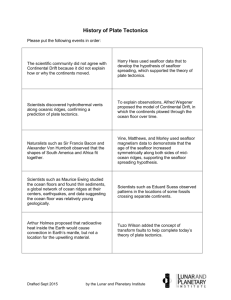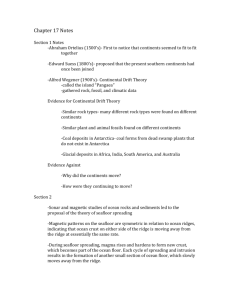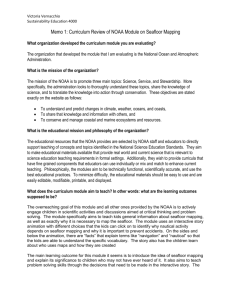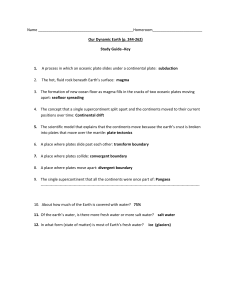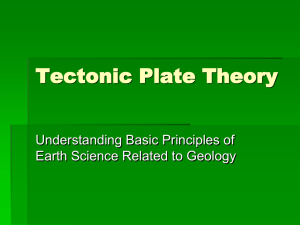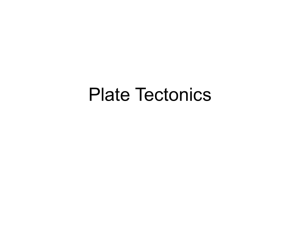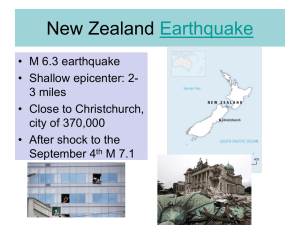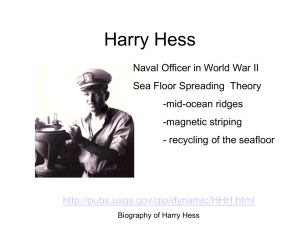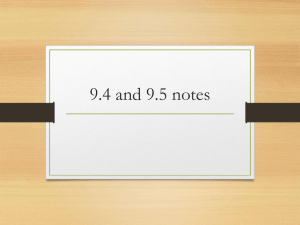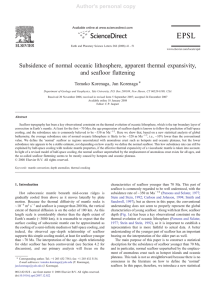File
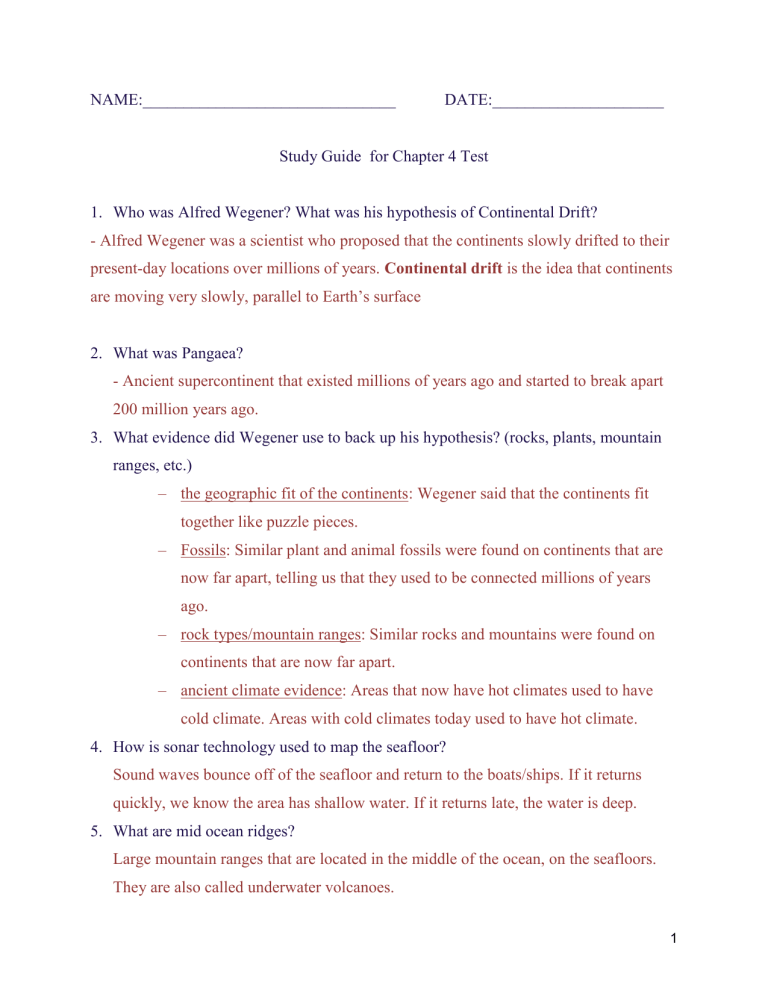
NAME:_______________________________ DATE:_____________________
Study Guide for Chapter 4 Test
1.
Who was Alfred Wegener? What was his hypothesis of Continental Drift?
- Alfred Wegener was a scientist who proposed that the continents slowly drifted to their present-day locations over millions of years. Continental drift is the idea that continents are moving very slowly, parallel to Earth’s surface
2.
What was Pangaea?
- Ancient supercontinent that existed millions of years ago and started to break apart
200 million years ago.
3.
What evidence did Wegener use to back up his hypothesis? (rocks, plants, mountain ranges, etc.)
– the geographic fit of the continents: Wegener said that the continents fit together like puzzle pieces.
–
Fossils: Similar plant and animal fossils were found on continents that are now far apart, telling us that they used to be connected millions of years ago.
– rock types/mountain ranges: Similar rocks and mountains were found on continents that are now far apart.
– ancient climate evidence: Areas that now have hot climates used to have cold climate. Areas with cold climates today used to have hot climate.
4.
How is sonar technology used to map the seafloor?
Sound waves bounce off of the seafloor and return to the boats/ships. If it returns quickly, we know the area has shallow water. If it returns late, the water is deep.
5.
What are mid ocean ridges?
Large mountain ranges that are located in the middle of the ocean, on the seafloors.
They are also called underwater volcanoes.
1
6.
What is the process of seafloor spreading?
Convection currents bring hot materials in the mantle, toward the surface, causing magma to form
Magma flows out as lava through cracks along the ridge.
When lava cools, it forms new seafloor.
The seafloor moves sideways, away from the center of the M.O.R.
7.
Why are magnetic polarity reversals considered evidence for seafloor spreading?
Earth’s magnetic poles have reversed several times.
As oceanic crust forms from lava and cools, tiny crystals record the magnetic field orientation.
By measuring the distance of a stripe of rock from the mid-ocean ridges and determining its age, the speed of the seafloor movement can be calculated
8.
How fast is the sea floor moving?
Only a few centimeters per year.
9.
How do scientist study the seafloor? What is used to do this?
•
Sonar technology is used in order to study the seafloor. In addition, scientists study the seafloor by drilling the seafloor. Seafloor drilling confirmed that the oldest rocks are located furthest from the mid-ocean ridge
10.
What are lithospheric plates?
Lithospheric plates are large brittle pieces of Earth’s outer shell
11.
What is the theory of plate tectonics?
The theory of plate tectonics explains the movement of lithospheric plates. Mid-ocean ridges show boundaries of some lithospheric plates
12.
What are ocean trenches?
2
Ocean trenches are the deep parts of the seafloor where numerous earthquakes and volcanoes occur
13.
What is the relationship between ocean trenches and plate boundaries? What happens at these sites?
Seafloor is formed at ridges and destroyed at ocean trenches. Earthquakes and volcanoes occur where the edges of plates are pushed together, pulled apart, or slide horizontally.
14.
What are the 2 types of lithosphere plates?
15.
Which type of plate is thicker?
Continental lithospheric plate is thicker.
16.
What is the difference in composition between the two types of lithospheric plates?
Look at the table above.
3
17.
What are convection currents in the mantle? What is their role in seafloor spreading?
Some scientists believe that convection controls the movement of plates.
They are the source of movement for the magma as it rises upward and is expelled from the M.O.R. to form new seafloor.
18.
What are some sources of heat in the mantle?
Radioactive decay is one important source of internal heat.
19.
What is a slab? how is it related to seafloor spreading?
Slabs are cooler, denser lithospheric plates that sink down into the mantle.
They bend and break as they sink down into the mantle, causing earthquakes.
20.
What is ridge push?
This is the force of gravity that pushes the plate downward and away from the ridge.
21.
what is slab pull?
A slab pull occurs when a plate, or a slab, is pulled into and sinks into the mantle.
22.
What does GPS stand for? How does it work?
Global Positioning System (GPS) is a network of satellites used to determine locations on Earth. Measures the movement of plates
4

